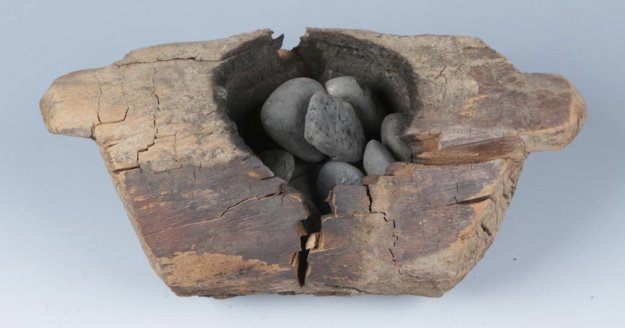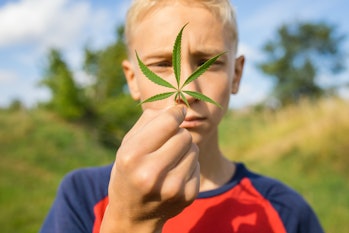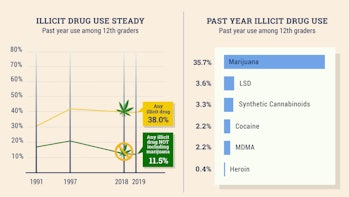With each passing birthday, it feels like your jeans are suddenly a bit tighter. No matter what you try to do, it seems impossible to combat age-related weight gain. Whether you are in your 50s or 80s, age-related weight gain can be a major problem. If you start gaining just a pound a year when you are 50 years old, you will end up weighing 30 pounds more by the time you turn 80.
From the ages of 29 to 39, women gain an average of 7 pounds. During the same time period, men gain an average of 15 pounds. Unfortunately, it is harder for people to lose weight in their 30s and 40s. By the time you get to call yourself a senior, you probably have a dozen pounds or more that you want to get rid of.
Part of the problem is because your muscle mass changes. Starting in your 30s, you lose muscle mass with each passing decade. Your muscle mass is then replaced by fat. Even if you work out frequently, you will still deal with this problem. Since muscle burns more calories than fat, this change causes your metabolism to slow down.
Changing hormones also leads to weight gain. Because of estrogen changes, women typically gain about 15 pounds during menopause. Meanwhile, men lose testosterone. This leads to less muscle mass and potential weight gain.
Once you reach retirement age, you finally have time to get in shape and lose weight. Your kids have moved out, so you no longer have so many family responsibilities getting in the way of your health. If you are still struggling to get in shape, CBD for weight loss may be able to help. CBD uses the cannabinoid system to help you treat some of the problems that keep you from having a healthier, thinner body.
How Does CBD Work?
Your body already has a cannabinoid system that uses the chemicals your body naturally produces. CBD and tetrahydrocannabinol (THC) both work by using this natural system. In total, there are at least 113 cannabinoids that have been discovered in cannabis. THC is the most famous one because it is the component in cannabis that gets you high. Unlike THC, CBD and other cannabinoids do not have psychoactive properties.
Instead of causing a sense of euphoria, CBD helps with problems like stress, pain and anxiety. Many people take CBD for insomnia, arthritis and similar conditions. CBD targets the CB1 and CB2 receptors in the brain to alleviate different medical problems.
Because of the 2018 Farm Bill, farmers can now grow and sell hemp. Unlike other strains of cannabis, hemp does not contain high levels of THC. This means that CBD can be legally produced and sold under federal laws. Many states also have laws that legalize CBD production. Because of the legality of CBD, many researchers are now looking into the different therapeutic effects of this cannabinoid. Investment and research in this field are only beginning, so there is still a long way to go before researchers discover all of the conditions that CBD can treat and the correct dosages.
At the moment, research trials have found success in using CBD to treat schizophrenia, autism, alcoholism and skin conditions. There are more than 150 trials taking place around the world that are looking into other conditions as well. Right now, the Food and Drug Administration has actually approved a CBD-based drug known as Epidolex to treat a kind of epilepsy. From trials focused on sleep disorders to pain management, scientists have already found that CBD can help with a number of different problems.
How Does CBD Affect Weight Loss?
If you plan on taking CBD for weight gain, you may be on the right track. Like any diet plan, you also need to adopt a healthy lifestyle as well. Other than taking CBD, it is also important to eat a healthy diet and start working out.
Researchers have already found several ways that CBD can support weight loss. In a 2011 study in Neuroscience Letters, researchers found that laboratory rats had a significant drop in body weight after they were given CBD injections for 14 days. During the study, the rats received 2.5 to 5 milligrams of CBD for every kilogram of their body weight. The rats that received 5 milligrams of CBD had the most pronounced weight loss. Because of this study, researchers believe that CBD can alter how the body gains weight.
At the moment, scientists think that CBD supports weight loss because of the way it works in the human body. Your body has had an endocannabinoid system since the moment you were born. This cannabinoid system produces different responses to compounds using two receptors known as the CB1 and CB2 receptors. The CB2 receptors exist throughout your body. Meanwhile, the CB1 receptors are primarily located within your central nervous system and brain.
People who suffer from obesity have a weird distribution of CB receptors. For whatever reason, the CB1 receptors travel to other parts of the body that they are not supposed to be in. They become especially prevalent in fatty tissue. Because of this strange distribution, scientists now believe that there could be a link between obesity and the activation of CB1 receptors.
CBD influences the way your body’s natural cannabinoids work. This can lead to the shutdown or activation of different receptors, which can influence your body’s metabolic system. Because of this, some evidence seems to indicate that using CBD can help you lose weight. It may also help you combat weight gain that stems from metabolic disorders.
The Benefits of Using CBD for Losing Weight
Scientists have discovered that CBD can help a variety of different health problems. Other than alleviating chronic pain, it is useful for treating depression and anxiety. The following benefits help CBD to successfully support a diet and exercise plan for losing weight.
CBD Supports the Browning of Your Fat Cells
In recent years, scientists have discovered that the human body contains white and brown fat. White fat is the main form that exists in the body. It is used to cushion and insulate your organs. White fat is also responsible for storing energy.
Unfortunately, white fat is also linked to a number of chronic illnesses. If you have heart disease or diabetes, you are more likely to have excessive amounts of white fat. This kind of fat is generally considered unhealthy.
Brown fat is the kind of fat your body actually burns for energy. When you are running low on energy, your body turns to brown fat before it uses white fat. People who are at a healthy weight tend to have more brown fat than overweight or obese individuals. To transform white fat into brown fat, you need to make sure to get enough sleep, exercise and expose your body to cold temperatures.
It turns out that using CBD may also help your body turn white fat into brown fat. This browning of fat cells has been shown to happen in laboratories. Scientists used CBD and test tubes to see what would happen to white fat cells. The presence of CBD helped to create the proteins and genes needed for creating brown fat.
CBD Could Help Improve Your Metabolism
While most people associate cannabis with getting the munchies, CBD may actually help you reduce your food intake. Recent research seems to suggest that using CBD can help you lower the amount of food you eat. It can also increase your metabolism. As a result of these two mechanisms, you could enjoy a higher level of weight loss.
In animal studies, CBD affected an animal’s weight by targeted CB1 and CB2 receptors within the brain and lymphoid tissue. Over the course of two weeks, rats were given daily injections of CBD. They received 2.5 to 5 milligrams per kilogram of body weight. The higher dose was connected to more weight loss, but both doses actually led to a reduction in body weight.
CBD Can Reduce Your Body Weight
In population studies, marijuana is actually connected to having a lower body weight. Researchers looked at 50,000 people and surveyed their cannabis use. Among people who used cannabis at least three days a week, there was a 14 to 17 percent incidence of obesity. Meanwhile, people who completely abstain from marijuana use for the last 12 months had a 22 to 25 percent obesity rate.
It should be noted that this study looked at marijuana use and not CBD use. Some researchers have proposed that the different cannabinoids in marijuana have a synergistic effect on appetite and metabolism. Because of this, some people use full-spectrum products so that they get other cannabinoids as well as CBD.
CBD May Alleviate Metabolic Disorders
There is also some research that shows how CBD can affect metabolic disorders. Researchers have found that metabolic disorders like high blood pressure, type 2 diabetes and high cholesterol are linked to higher obesity rates. This may be due to having too many CB receptors activated in the body. CBD helps to block the CB1 receptors, which may be why it seems to reduce an individual’s risk of becoming obese.
Previous studies show that CBD can have a remarkable impact on metabolic disorders. In one study, obese rats were given CBD treatments. The treatments led to lower blood sugar levels and better liver health. In addition, these rats had a 25 percent lower rate of high cholesterol than the rats in the control group. While rats are obviously not human beings, studies like this do show promise in using CBD to treat weight gain.
Does THCV Help You Lose Weight?
Other cannabinoids like THCV may be able to help with obesity as well. THCV is a minor cannabinoid that is an antagonist for CB1 and CB2 receptors. This means you can take THCV for weight loss. While THC increases your appetite, THCV lowers your appetite because it is an antagonist.
Basically, THCV is a natural appetite suppressant. It can help to reduce glucose intolerance, which is helpful for people who have type 2 diabetes. THCV can also increase your calorie expenditure, which supports natural weight loss.
How Can You Take CBD?
Since a great deal of CBD research is still ongoing, there is no recommended dosage at the moment. The right dosage can vary based on your personal body chemistry, your health conditions and what you are using CBD for. In general, it is a good idea to start with the lowest dose possible and gradually increase your intake from that point. Many people begin by taking 25 to 30 milligrams of CBD each day. If this dosage does not seem to work, you can try increasing it.
Other than choosing the right amount, you can also select different consumption methods. Many people choose one of the following options for using CBD.
- Edible products.
- Capsules and pills.
- Oils.
- Vaping liquids.
- Topical products.
If you use edibles, it will take your body longer to absorb the CBD. Once the body does absorb the drug, the drug will actually last for longer. Meanwhile, vaping CBD will allow you to enjoy the effects faster. There are risks associated with inhaling CBD, so many people use edibles, capsules or topical products instead.
Any medication you use will always carry a risk of side effects, so keep this in mind before you try any drug. In general, CBD is considered relatively safe when compared to other medications. There is a minor risk of side effects like drowsiness, dizziness, dry mouth and low blood pressure. In very rare cases, there have been signs of liver injury.
CBD can potentially interact with other medications, so it is important to be aware of that before you use CBD. You should always talk to your doctor before starting any diet and exercise plan. In addition to discussing CBD, you can also ask your doctor about different diet and exercise plans that can support your ongoing weight loss.









